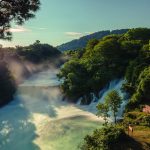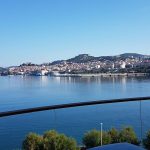Continuing our look at National Park Krka beyond the waterfalls, a visit to one of the most important Roman settlements to be found in Dalmatia today – Burnum.
National Park Krka may be best known for its spectacular waterfalls and pristine nature, but it has plenty of man-made attractions as well, some of which date back thousands of years. Among them is the Roman military camp Burnum, whose preserved remains include the only military amphitheatre in Croatia.
It is an amphitheatre which sometimes comes to life even to this day, especially during the Ides, the traditional full moon time of festivities for the Romans:
The word Ide originally referred to the day of a full moon. The Romans considered these days favourable in their calendars for the organisation of their festivities. In light of that, we organize the Burnum Ides at Burnum, the only Roman military amphitheatre in Croatia during the summer. Visitors were able to get a Roman hairstyle, try on some of the Roman equipment, try on a laurel wreath, relax on a triclinium — a Roman lounge chair, enjoy the stand with fragrant aromatics, watch a blacksmith at work or the potter making clay pots. The atmosphere under the full moon and torches rose further when the old Roman games were played, and the winners received symbolic prizes.
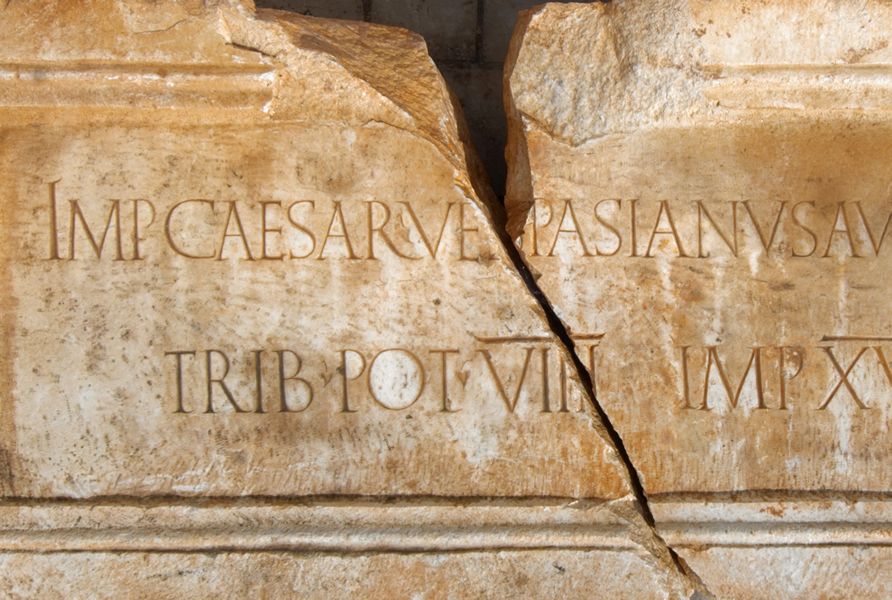
Situated near the present-day village of Ivoševci, the camp was constructed in the first century AD at a strategicallly important location for controlling traffic along the River Krka, as well as being a base for military campaigns further inland in Dalmatia.
The XI Roman legion was stationed at the camp,and there is evidence to suggest that the camp was constructed during the rule of Emperor Claudius, then expanded under Emperor Vespasian. After the Romans left, the camp turned into an urban settlement. It was then completely destroyed in the 6th century, when Emperor Justinian attempted to take it back from the Ostrogoths.
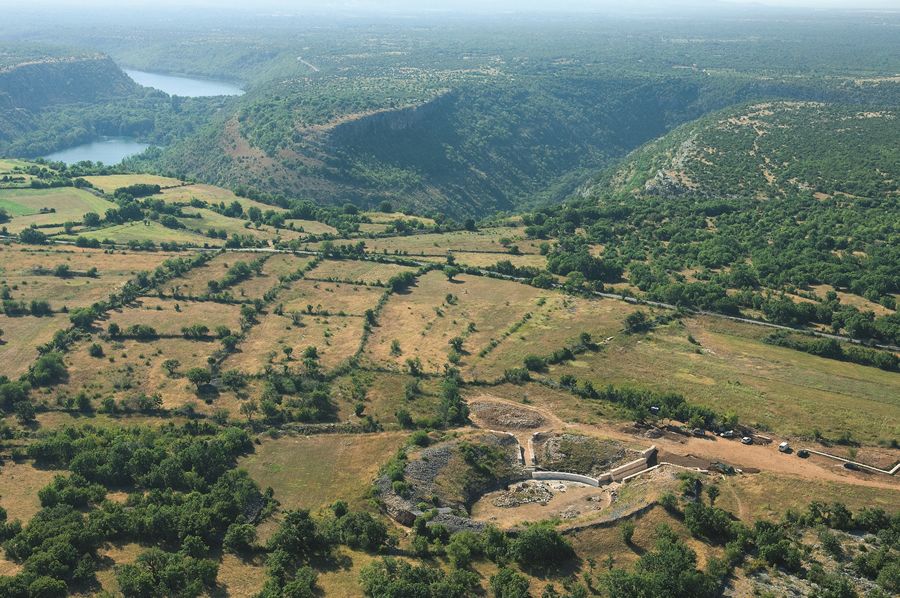
In addition to the amphitheatre, the othe most significant remnant of the camp are the two remaining arches of the former military command post. Originally five, British traveller Alberto Fortis noted a the end of the 18th century that there were three still standing.
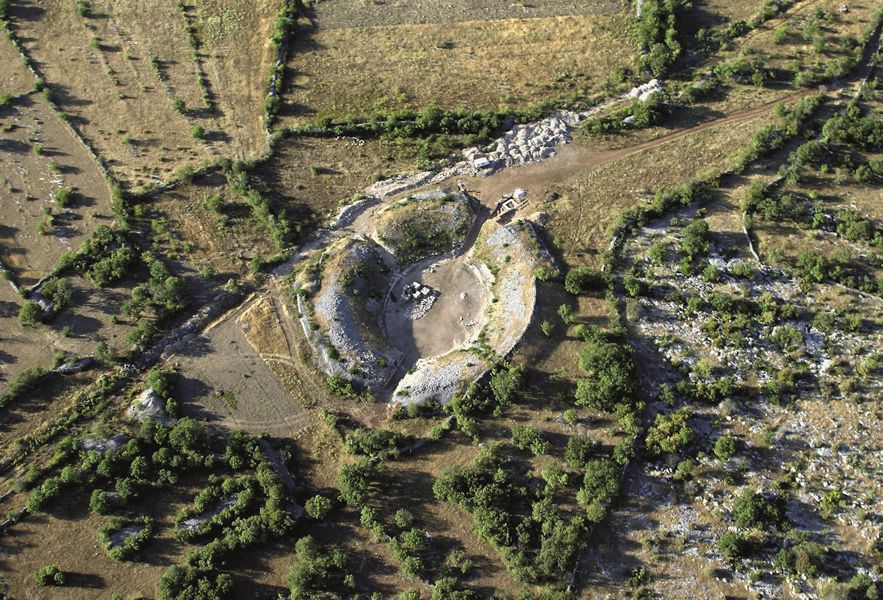
It was only in the 19th century that Burnum began to attract interest as an archaeological excavation site in the form of renowned Croatian archaeologists, Father Lujo Marun and Father Frane Bulić, although the first excavations were conducted by Austrian archaeologists.
Archaeological research has advanced considerably since those days, and a fascinating reconstruction of Burnum was presented in 2013 at the world’s largest archaeology and tourism fair in Paestum:
Krka National Park participated in the world’s largest archaeology and tourism fair in Paestum (Borsa mediterranea del turismo archeologico, November 2013). On the final day of the fair, the Archaeology Department of the University of Bologna presented the most modern methodologies that have been used in the research at Burnum… Both exhibitors and visitors showed great interest in the robot aircraft with infrared cameras for spectroscopic and 3D ground surveys, and the promotion video ‘Archaeology from the sky’. See the video above.
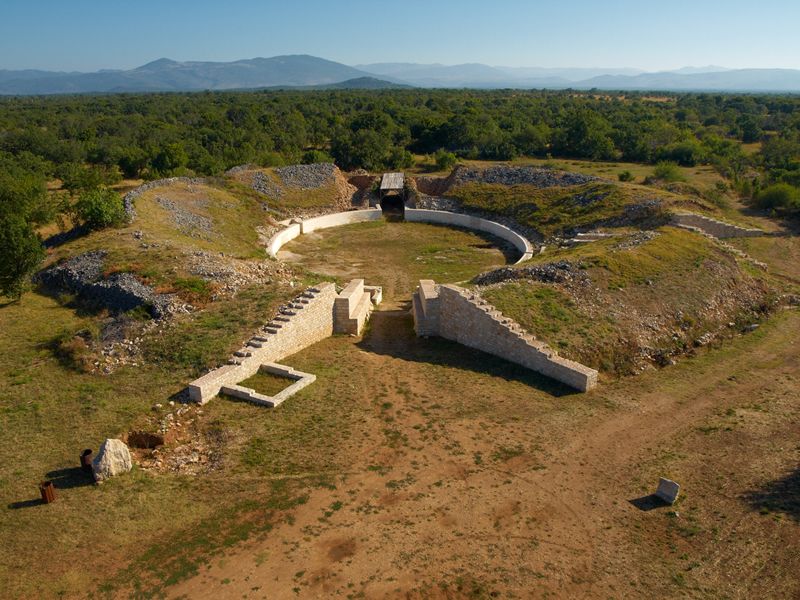
The site also contains an underwater aqueduct, more than 32km long, which runs under Plavno Polje. The water flowed at 86 litres a second and there was a height difference of 170 metres between the source of the water and the settlement. There are two legends associated with the aqueduct:
Two men courted a woman. One man should build a town, the other man should build an aqueduct to this town. And who would be first, he would receive her as his wife. Both done simultaneously, but that one, who had built the town, judged, that his town was not finished yet, and so the other one should marry her. With the earth, which was dug out at the building of the aqueduct, was built a hill and on the hill a village. The name of that one, who built the aqueduct, was Rade and so is the village also called Radučka glavica.
In the second legend:
Selemnus, a beautiful young shepherd in those parts, was beloved by Argyra, the Nymph, from whom the town and fountain of that name were called; but the flower of his age being over, the Nymph deserted him, upon which he pined away, and was transformed into a river by Venus; after this he still retained his former passion, and for some time conveyed his waters, through a subterraneous passage, to Argyra’s fountain. And because they both had separated, but that story was never forgotten, the names remained in memory in Argyra and Selemnos near Korinth and in Argyruntum and Zrmanja. So the aqueduct stayed in memory. The major harbour of Liburnian navy since 5th century BC was Corynthia at the eastern cape of Krk island.
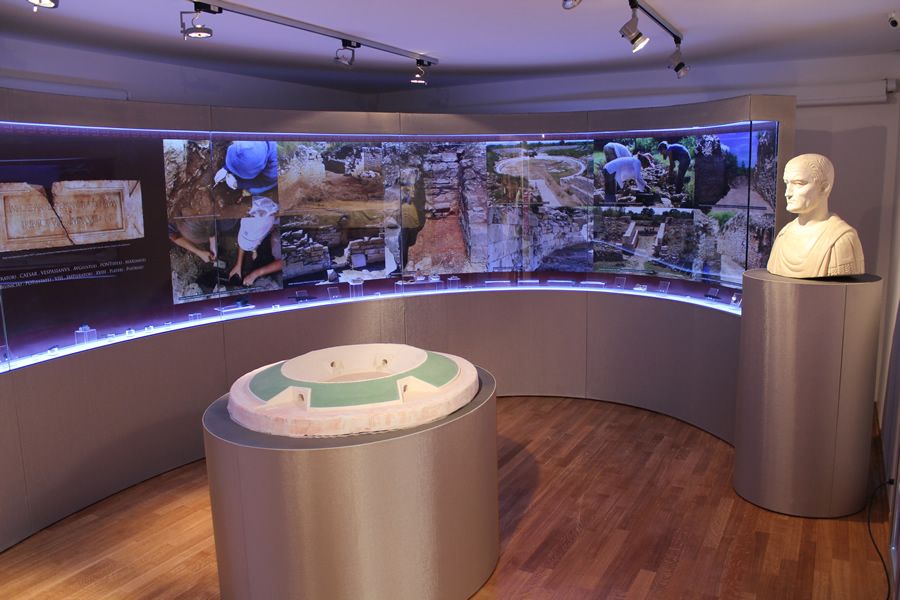
During the various archaeological digs, many artifacts have been found over the years – ceramics, coins, horse equipment and glass, for example. Many of these findings, and much more relating to the history of Burnum, can be found at the Puljane Eco Campus, which opened in 2010. Designed as the core for development and research activities for visiting school groups and more serious researchers, Puljane is open all year. Burnum can only be accessed by road (see map below).
To learn more about the natural and man-made treasures of National Park Krka, click here.

